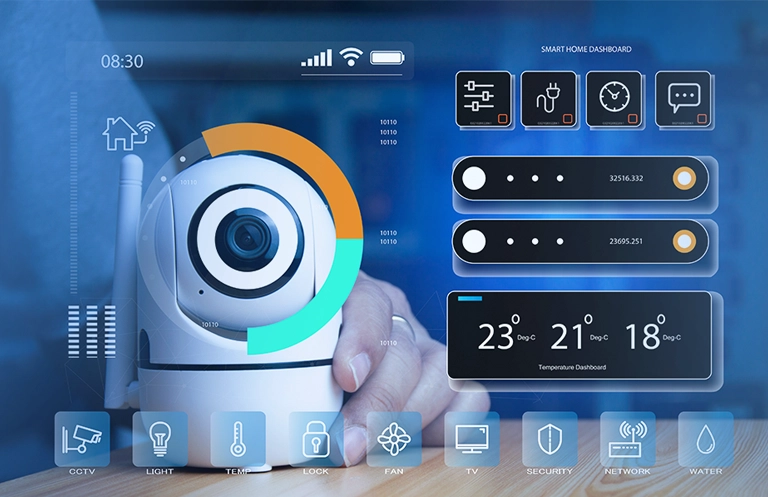As wireless connectivity is the most integral factor for connected devices to function properly, any sort of disturbance in the connectivity directly hampers the device’s performance. From choosing a flawed encryption style to a poor wireless security configuration, there are many issues one can face with a wireless connection. This is where we need wireless testing.
What is Wireless Testing?
Wireless testing evaluates connectivity between devices and networks and ensures that the devices perform the tasks smoothly without any interruption or delay. A connected device is tested by a series of evaluations that cover interoperability, performance, regulatory compliance, and user safety. The purpose is to ensure that the devices function effortlessly using the defined wireless protocol and on the appropriate frequency.
Wireless Communication Protocols
There are many wireless communication protocols available for use for device connectivity.
Radio-Frequency Identification (RFID)
RFID is used to establish wireless communication between two devices with an IC tag that can identify and control the connected devices. It can be incorporated into devices, carried by users, or places to track and establish connectivity.
ZigBee
It is an open global standard wireless communication technology that is used for low-power low-cost wireless networking requirements. The standard operates on physical radio specification – IEEE 802.15.4 and operates in unlicensed bands – 2.4 GHz, 900 MHz, and 868 MHz. It is largely used in Wireless Home Area Networks (WHANs).
Bluetooth
It is a wireless connectivity technology standard that is used for short-range communication. It operates on ISM bands from 2.402 to 2,48 GHz using UHF radio waves. It creates a personal data network for establishing security in communication.
Wireless Local Area Network (WLAN)
A group of devices use radio transmission and form a wireless network that allows users to move around in the coverage area without disturbing the network connection. Wi-Fi is a type of WLAN connection. It leverages radio waves to send data packets where all the endpoints are connected to communication with a base location.
LoRaWAN
LoRa stands for long-range radio, and it was designed for low-power, long-range communication mainly targeted for M2M and IoT networks. It connects several applications by enabling public or private multi-tenant networks. Every LoRa gateway is capable of controlling millions of nodes making the network much cheaper and faster to implement.
Z-Wave
It is an RF-based wireless communication technology that is designed to monitor and control applications that are part of the network. It supports full mesh networks without the need for a coordinator node and is primarily used for home automation using 850-926 MHz frequencies depending on location.
Thread
It is an open standard, built on IPv6 and 6LoWPAN protocols. It defines the communication protocol and system architecture for the network, while the LoRa physical layer enables the long-range communication link. It is also responsible for managing the communication frequencies, data rate, and power for all devices.
Wireless Connectivity Testing and Certification
To ensure that the connected devices operate efficiently without any interruption, advanced wireless testing can be carried out, which evaluates the compatibility, functionality, interoperability, and performance of the product.
Performance
Wireless performance testing checks the robustness of the connectivity and suggests how well the connected devices perform in various sets of situations.
Functional
- Device Configuration
Connected devices are usually configured to operate on various modes. It’s important to check how the devices operate in all those modes while being part of the network. - Graphical User Interface & Usability
Users will access the product/devices using GUI or WebUI. Functional testing ensures all the functionalities and usability of the UI are on point and the actions taken using the UI are pushed to the devices well using the network.
Stability
Stability is the most crucial factor for any wireless network to be up and running always. Testing for stability evaluates the connectivity and ensures that it doesn’t go down in adverse environmental conditions.
Interoperability
It checks the device’s interaction with other devices in the network. The purpose of interoperability testing is to communicate with any type of device without any compatibility issue. It ensures end-to-end functionality between two different communicating devices.
A leading technology group and solution provider in the areas of gardening tools, automotive, and ventilation technology wanted to augment their testing team to uncover stability issues with Wi-Fi Routers / Wi-Fi Repeaters. Also, they wanted to ensure that there is smooth switching between Wi-Fi Router and Wi-Fi Repeaters in adverse weather conditions.
eInfochips worked on the functional and non-functional Wi-Fi connectivity requirements while mitigating the current Wi-Fi stability issues faced by the end customers. Our wireless testing team designed and executed Wi-Fi functional and performance tests to uncover the unknowns and reduce end customer hassles. The team also proactively identified test improvements and test lab enhancements to replicate the customer environment.
Final Thoughts
With the ever-growing market of connected devices, it is important to ensure that the wireless connectivity of the devices and the established network remain uninterrupted. In most international markets, there are regulatory standards for wireless power transfer and the radiation of electromagnetic waves. With wireless testing, the regulatory requirements can be met and it ensures that the product performance is intact in various situations.
eInfochips offers end-to-end testing services for the complete wireless ecosystem that benefits device manufacturers, chipset/module vendors, IoT integrators, and network operators. eInfochips has expertise in testing wireless routers, hotspots, tablets, smart cameras, wireless speakers, headphones, gaming headsets, home entertainment systems, fitness wearables, and IoT (M2M) devices for healthcare, smart city, metering, transportation, and other industries.
To know more about our quality engineering services, speak to our experts.













